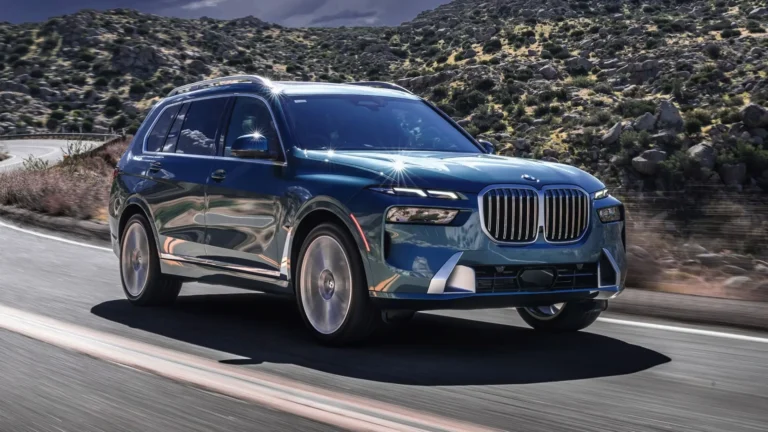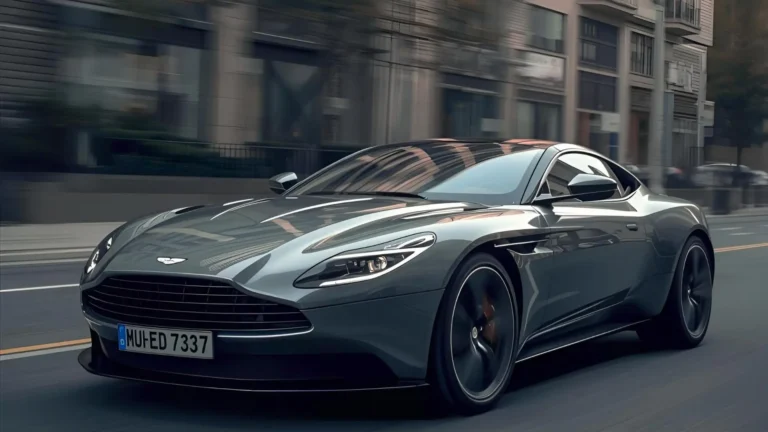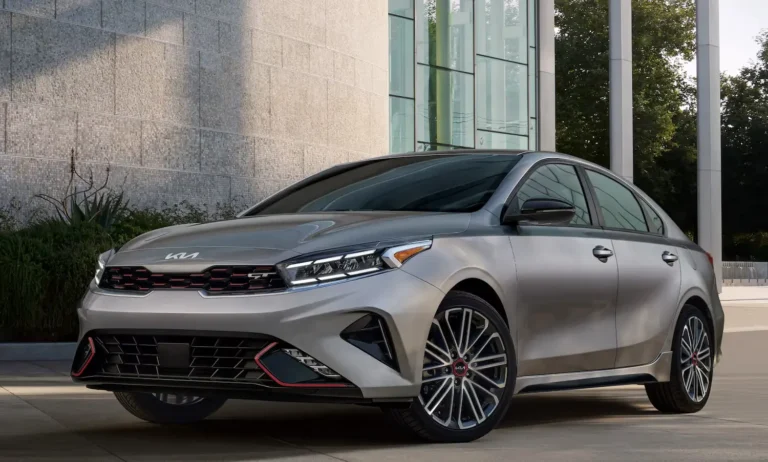Ferrari F40: The World’s First 200 MPH Supercar
The Ferrari f40 is a special car. Ferrari made it from 1987 to 1996. It was the first car to go over 200 mph. This red beast changed how we think about fast cars.
Enzo Ferrari wanted to make the best car ever. The Ferrari f40 was his last project. He died shortly after approving this car. This makes the F40 very important in car history.
The car has a twin-turbo engine. It makes 471 horsepower. The body is made of carbon fiber. This makes it very light and very fast.
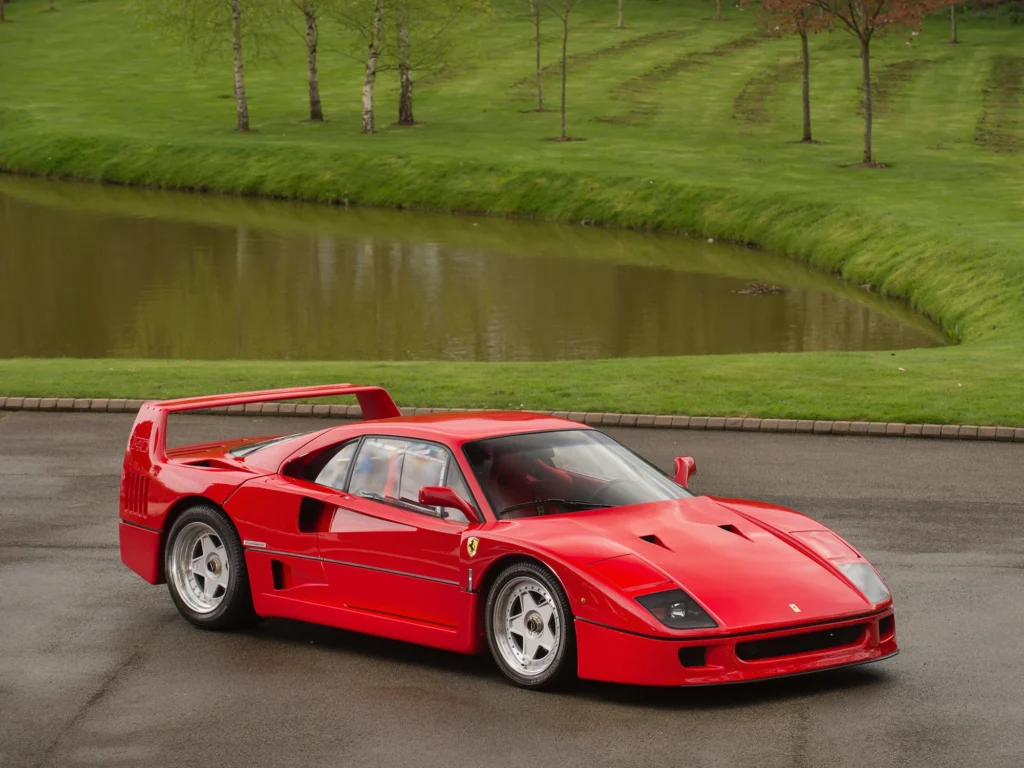
Why Ferrari Built the F40
Ferrari had a big birthday in 1987. The company was 40 years old. They wanted to celebrate with something special. The Ferrari f40 was their gift to the world.
The company had rules for this car:
- Make it as light as possible
- Use the best materials available
- Put racing technology inside
- Make it go very fast
- Keep it simple and pure
The design team worked hard. They tested everything on race tracks. Every part had to work perfectly. Nothing was added just to look pretty.
Engine Power and Speed
The heart of the Ferrari f40 is amazing. It has a V8 engine with two turbochargers. This engine is small but very powerful.
Engine Details
- Size: 2.9 liters
- Type: V8 with twin turbo
- Power: 471 horsepower
- Torque: 426 pound-feet
- Fuel: Regular premium gasoline
- Cooling: Water and oil coolers
- Materials: Aluminum block and heads
The turbos make this engine special. They push more air into the cylinders. This creates more power from a smaller engine. The engine revs to 7000 rpm.
Ferrari f40 top speed
The Ferrari f40 is incredibly fast.It reaches 201 mph top speed. This car runs on a twin-turbo V8 engine. The engine size is 2.9 liters. It makes 471 horsepower. The F40 goes 0 to 60 mph in 4.1 seconds. Quarter mile time is 12.1 seconds. The car hits 100 mph in 8.5 seconds.
- Top Speed: 201 miles per hour
- 0 to 60 mph: 4.1 seconds
- Quarter Mile: 12.1 seconds
- 0 to 100 mph: 8.5 seconds
- Braking Distance: 130 feet from 60 mph
These numbers were amazing in 1987. Even today, they are very good. The car feels much faster than the numbers show.
Size and Weight Facts
The Ferrari f40 is not a big car. Ferrari kept it small and light on purpose. Every inch was planned carefully.
Car Measurements
| Specification | Measurement |
| Length | 171.6 inches |
| Width | 77.6 inches |
| Height | 44.3 inches |
| Weight (Dry) | 2425 pounds |
| Weight (With Fluids) | 3018 pounds |
| Wheelbase | 96.5 inches |
The car is very low to the ground. This helps it cut through air better. The short length makes it turn quickly. The light weight helps everything work better.
Weight Saving Tricks
Ferrari used many tricks to keep weight down:
- Carbon fiber body panels
- Plastic windows instead of glass
- No air conditioning system
- No radio or sound system
- Very basic interior trim
- Lightweight racing seats
- No power steering or brakes
Every pound saved made the car faster. The engineers checked every part. If it was not needed, it was removed.
Body Design and Air Flow
The Ferrari f40 looks angry and fast. Every curve and line has a job. The designers cared more about speed than beauty.
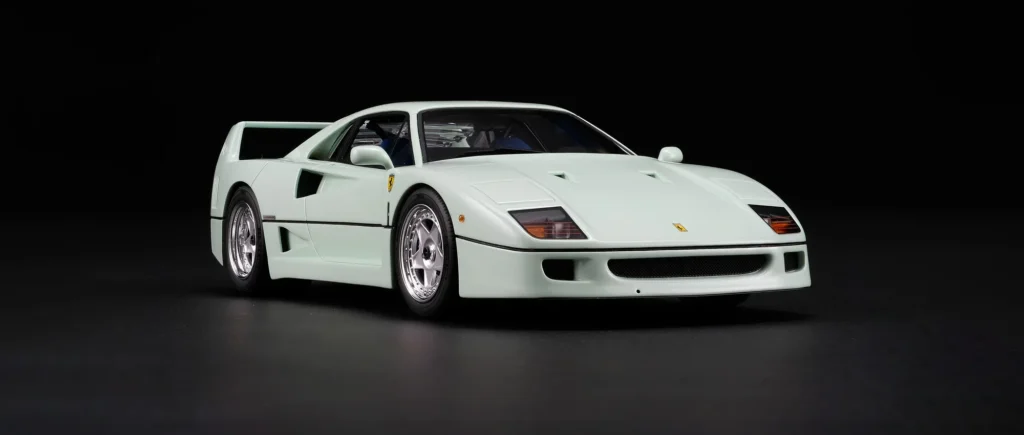
Body Parts That Help Speed
- Front Spoiler: Pushes air under the car
- Side Vents: Cool the engine and brakes
- Rear Wing: Holds the car down at high speed
- Flat Bottom: Makes air flow smoothly underneath
- Wide Tires: Grip the road better
- Low Height: Cuts through air easily
The body is made from carbon fiber. This material is very strong and very light. It comes from airplane technology. The panels are thin but do not break easily.
Cooling System Design
The Ferrari f40 gets very hot when driven hard. Ferrari added many cooling features:
- Large radiators in the nose
- Oil coolers behind the doors
- Air vents all over the body
- Special rear window with slots
- Big intercoolers for the turbos
- Brake cooling ducts
All these parts work together. They keep the engine and brakes from getting too hot. This lets the car run fast for a long time.
How It Drives and Handles
The Ferrari f40 drives like a race car. It is not comfortable like a regular car. It talks to the driver through the steering wheel and seat.
Steering and Brakes
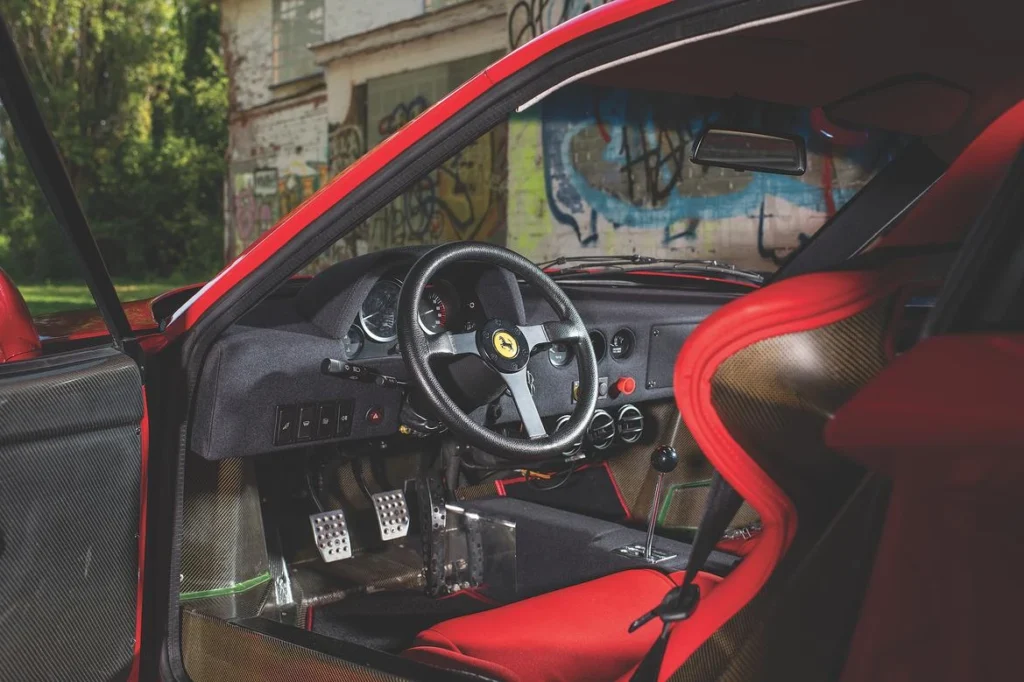
- Steering: No power assist – you feel everything
- Brakes: Big discs front and rear
- Pedals: Racing style layout
- Clutch: Very heavy and hard to push
- Shifter: Direct connection to transmission
- Suspension: Very stiff and low
The car tells you exactly what the wheels are doing. You feel every bump in the road. The steering is heavy at low speeds but perfect at high speeds.
Transmission Details
The Ferrari f40 has a 5-speed manual transmission:
- Gears: 5 forward speeds plus reverse
- Clutch: Single disc racing type
- Shifter: Short throw with metal gates
- Final Drive: Limited slip differential
- Gear Ratios: Close together for racing
You must use the clutch for every shift. There is no automatic option. The gear lever moves with solid clicks. Shifting takes practice to do smoothly.
Inside the Car
The Ferrari f40 interior is very basic. Ferrari removed everything that was not needed. This saved weight and kept costs down.

What You See Inside
- Seats: Carbon fiber racing buckets
- Dashboard: Simple black plastic
- Gauges: Five round analog dials
- Windows: Manual crank handles
- Carpet: Thin industrial type
- Door Panels: Basic carbon fiber
There is no radio or CD player. There is no air conditioning. The windows are plastic, not glass. Even the door handles are simple metal pieces.
Driving Position
The seats do not move much. You sit very low in the car. Your legs are straight out in front. The steering wheel is small and close to your chest.
The view out is not great. The rear window is small and has slots in it. The side mirrors are tiny. You really need to pay attention when driving.
Different Versions Made
Ferrari made several types of Ferrari f40 cars. Each one was made for different purposes. Some were for racing only.
Standard F40
This is the regular Ferrari f40 that most people know:
- Power: 471 horsepower
- Use: Street driving and track days
- Features: Basic interior with some comfort items
- Production: 1311 cars total
- Availability: Sold to regular customers
F40 Competizione
This version was made for racing:
- Power: 691 horsepower
- Weight: 200 pounds lighter
- Features: Roll cage and racing seat
- Use: Track and race events only
- Production: Very few made
- Availability: Racing teams only
F40 LM (Le Mans)
The LM was the most extreme version:
- Power: Around 700 horsepower
- Aerodynamics: Huge rear wing and front splitter
- Interior: Completely stripped out
- Weight: Lightest of all F40s
- Production: Only 19 cars made
- Price: Much more expensive than regular F40
How Many Were Made
Ferrari did not plan to make many Ferrari f40 cars. They wanted to keep it rare and special. But demand was very high.
Production Numbers
- Total Made: 1311 cars
- Years: 1987 to 1992
- Best Year: 1989 with 400 cars
- Last Year: 1992 with 100 cars
- Special Versions: About 50 total
- Countries: Sold all over the world
Most cars went to wealthy collectors. Many buyers never drove their cars. They kept them as investments instead.
Why It Became Rare
Several things made the Ferrari f40 special:
- Enzo Ferrari’s last approved car.
- First production car over 200 mph.
- Made during Ferrari’s golden age.
- Limited production numbers.
- High performance reputation.
- Strong investment returns.
Today these cars are worth much more than when new. Good examples sell for over one million dollars.
What Makes It Special
The Ferrari f40 is different from other fast cars. It has a unique personality that car lovers respect.
Special Features
- Pure Driving: No computer help or aids.
- Light Weight: Much lighter than modern supercars.
- Sound: Amazing turbo and exhaust noise.
- Feel: Direct connection to the road.
- History: Important place in car history.
- Rarity: Not many were made.
Compared to Other Cars
The Ferrari f40 competed with several cars:
- Porsche 959: Had all-wheel drive and more technology
- Lamborghini Countach: Looked more dramatic but slower
- McLaren F1: Came later and was even faster
- Jaguar XJ220: Had similar speed but different style
Each car had good points. But the ferrari f40 felt the most like a race car. It gave drivers the purest experience.
Owning and Maintaining One
A Ferrari f40 needs special care. These are not normal cars. They require expert knowledge and expensive parts.
Maintenance Needs
- Service: Every 3000 miles or yearly
- Specialists: Only Ferrari-trained mechanics
- Parts: Some are no longer made
- Cost: Very expensive to maintain
- Storage: Needs climate controlled garage
- Insurance: Requires agreed value policy
Driving Experience
Driving a ferrari f40 is not like other cars:
- Very loud inside with lots of noise.
- Hot in summer without air conditioning.
- Hard to see out of in traffic.
- Heavy clutch makes legs tired.
- Rough ride on city streets.
- Amazing on smooth race tracks.
The car rewards skilled drivers. It punishes mistakes quickly. You must respect its power and limits.
Technical Breakthroughs
The Ferrari f40 introduced many new ideas. These technologies changed how supercars were built.
New Technologies Used
- Carbon Fiber Body: First widespread use in road cars
- Twin Turbo V8: Ferrari’s first turbocharged street engine
- Composite Construction: Mixed materials for strength
- Racing Aerodynamics: Functional wings and spoilers
- Lightweight Philosophy: Every gram counted
- Direct Technology Transfer: From Formula 1 to street
Impact on Car Industry
Other makers copied Ferrari’s ideas:
- Carbon fiber became common in supercars
- Turbo engines replaced big naturally aspirated ones
- Weight saving became more important
- Aerodynamics got more attention
- Racing technology moved to street cars faster
- Pure driving experience gained value
Cultural Impact and Fame
The Ferrari f40 became more than just a car. It appeared in movies, games, and magazines everywhere.
Where You See It
- Movies: Featured in many action films
- Video Games: Every racing game includes it
- Magazines: Cover car for decades
- Posters: Bedroom wall favorite for kids
- Car Shows: Always draws the biggest crowds
- Museums: Displayed as automotive art
What It Represents
The Ferrari f40 stands for several ideas:
- Peak of 1980s supercar design
- Last of the analog supercars
- Enzo Ferrari’s final vision
- When speed mattered most
- Pure driving without electronics
- Italian passion for cars
Investment and Value
Ferrari f40 cars have become very expensive. Collectors pay huge amounts for good examples.
Price History
- 1987 New Price: $400,000
- 1990s Low Point: $250,000
- 2000s Recovery: $500,000
- 2010s Boom: $1,000,000
- Current Values: $1,200,000 to $2,500,000
- Record Sale: Over $5,000,000 for perfect LM
What Affects Price
Several factors change a ferrari f40’s value:
- Miles driven (lower is better)
- Service history (complete records needed)
- Accident damage (major problem)
- Original parts (replacements hurt value)
- Documentation (birth certificate important)
- Color combination (red with red interior best)
Problems to Watch For
The ferrari f40 can have issues. Buyers need to check everything carefully before purchasing.
Common Problems
- Fuel System: Lines and tanks can leak
- Turbo System: Turbos wear out and cost much to replace
- Clutch: Heavy use wears it quickly
- Electronics: Old wiring can cause fires
- Body Panels: Carbon fiber can crack
- Engine: Overheating damages internal parts
Inspection Points
Smart buyers check these items:
- Complete service records from Ferrari dealers
- Evidence of regular oil changes
- Turbo system operation and boost levels
- Fuel system for leaks or odors
- Body panels for cracks or repairs
- Interior wear and modifications
- Matching numbers on engine and chassis
Living with One Daily
Most ferrari f40 owners do not drive them often. These cars work best for special occasions and track events.
Daily Driving Reality
- Noise: Very loud inside at all speeds
- Heat: Gets hot without air conditioning
- Visibility: Hard to see in traffic
- Comfort: Racing seats hurt on long trips
- Practicality: No storage space for anything
- Attention: Everyone stares and asks questions
Best Uses
The ferrari f40 works great for:
- Track day events at race courses.
- Car shows and automotive gatherings.
- Weekend drives on empty roads.
- Photography and film projects.
- Special occasion celebrations.
- Investment portfolio additions.
The F40’s Racing Heritage
The ferrari f40 came straight from Ferrari’s racing programs. Many parts were tested in competition first.
Racing Technology Used
- Turbo System: Developed in Formula 1
- Carbon Fiber: Used in Grand Prix cars
- Aerodynamics: Wind tunnel tested like race cars
- Suspension: Based on sports car racing setup
- Materials: Lightweight composites from racing
- Engine Management: Computer systems from motorsport
Competition Success
While not a pure race car, the ferrari f40 influenced racing:
- GT racing series used similar technology
- Private teams converted street cars for racing
- Technology filtered down to other Ferrari models
- Established template for future supercars
- Proved road cars could use race technology
- Showed market wanted authentic performance
Future Outlook and Legacy
The ferrari f40 will always be special. Its place in automotive history is secure forever.
Why It Matters Long Term
- Historical Significance: Enzo’s last personal project
- Technical Innovation: Pioneered modern supercar design
- Cultural Impact: Defined what supercars should be
- Investment Potential: Values continue climbing
- Driving Purity: Last of the analog supercars
- Emotional Connection: Stirs passion in car enthusiasts
Influence on Modern Cars
Today’s supercars owe much to the Ferrari f40:
- Carbon fiber construction is now standard.
- Turbo engines replaced naturally aspirated ones.
- Weight reduction gets more attention.
- Aerodynamics are more sophisticated.
- Racing technology transfers faster.
- Pure driving experience has renewed value.
The ferrari f40 proved that the best cars connect driver to machine. Modern supercars with computers and aids are faster but less engaging. The F40 reminds us what driving should feel like.
Conclusion
The Ferrari f40 changed automotive history forever. It was the first car to break 200 mph and pioneered carbon fiber construction. This machine represents pure driving excitement without computers or aids. Today it costs over one million dollars but delivers experience money cannot buy. The Ferrari f40 connects driver to machine perfectly. It remains Enzo Ferrari’s greatest gift to car lovers worldwide.


